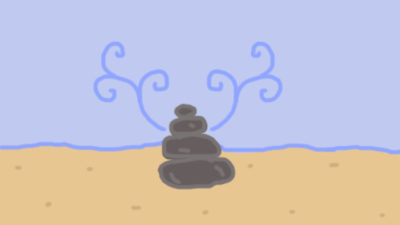
5 Breathing Techniques for Anxiety and Stress Relief
While feeling anxious or stressed, our breathing rate changes drastically. We typically take slow breaths from our lower lungs, but during panic or an emergency, we start breathing shallowly and rapidly from the upper lungs.
If we aren’t physically exerting ourselves, prolong shallow breathing can lead to hyperventilation. That produces a lot of the symptoms during a panic attack such as shortness of breath, dizziness, confusion, nausea, and tingling in the feet or hands.
Here’s five breathing exercises to avoid hyperventilation and reverse symptoms during stress or an anxiety attack.
Abdominal Breathing – Natural Breath
- Slowly breath in and inhale air through your nose, filling your lower lungs. Your upper chest stays still and your stomach will slowly expand with your breath.
- Breathe out easily.
- Repeat steps 1 and 2 in a relaxed (not forced) manner, remember to concentrate on only filling the lower lungs.
Calming Breath
- Inhale slowly through your nose. Start by filling lower lungs and then the upper lungs with air.
- Pause, hold your breath, and count to three.
- Exhale through pursed lips. Relax your face and also the muscles in the upper body.
- Repeat.
Practice this breathing exercise when you want to release tension and bring on calmness.
Breath Counting
- Take a few natural breaths.
- While breathing naturally count “one” as you exhale.
- Inhale slowly and naturally.
- Exhale and count “two”.
- Continue inhaling and counting while exhaling until you reach “five”.
- Begin a new cycle starting with “one” on the exhale.
You’ll recognize if you space out if you find yourself counting higher than five. Try to do 10 minutes of Breath Counting.
Measured Breathing
- Relax your jaw and loosen your shoulders.
- Inhale slowly through your nose while you count to four.
- Let your stomach expand as you inhale.
- Pause and hold your breath for a moment.
- Exhale slowly while you count to seven.
Repeat as smoothly as you can for a few minutes to reduce tension.
Belly Breathing
- Put one hand on your chest and your other hand above your belt line.
- Relax and let your mouth gape open.
- Gently exhale and sigh, relaxing the muscles of your upper body.
- Close your mouth, hold your breath and pause for a few seconds.
- Inhale gently through the nose filling your lower lungs and let the air push your stomach out.
- Breath in as much air as feels comfortable.
- Pause.
- Repeat.
Practicing one of these breathing techniques each day will reduce stress and anxiety. Stimulating the parasympathetic nervous system through deep breathing will promote calmness in the body and mind.
Wanna help My Anxious World grow? Do your Amazon shopping through my affiliate link!

5 Comments
these are such helpful exercises , I will send this link to my hubby he gets panic and anxiety when flying so this could probably help .Thank you darling
Informative post. Loved it!
I count my breaths when I need to calm down. It really helps slow down my heart rate.
These are great! Have you looked into Pranayama? Yogic breathing is amazing. There’s one I really like, alternate nostril breathing, but I can’t spell it. It’s like Ovulovulum (or not).
LOVE this. I was diagnosed with BPD and generalized anxiety disorders and their number one key to maintaining balance is focusing on breathing and being mindful <3